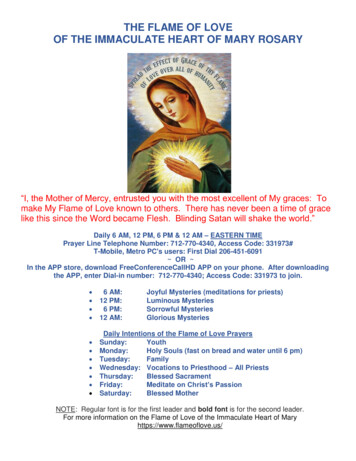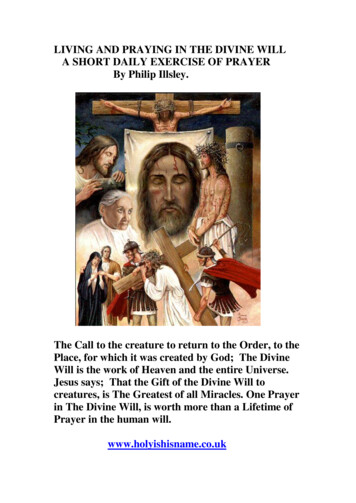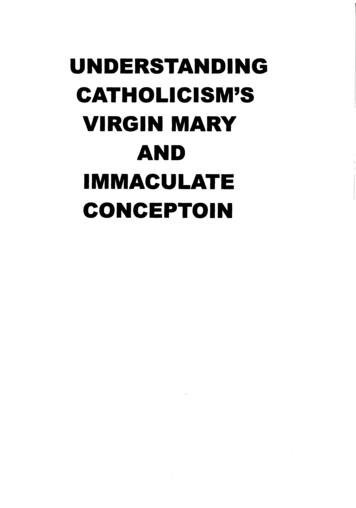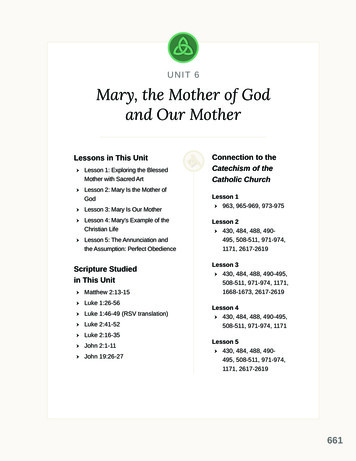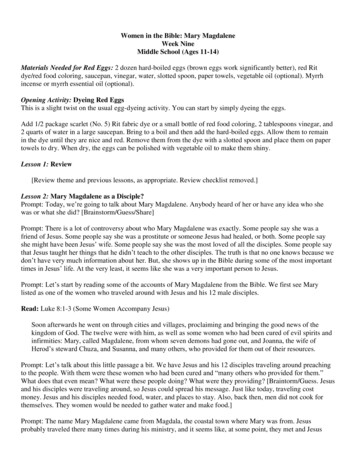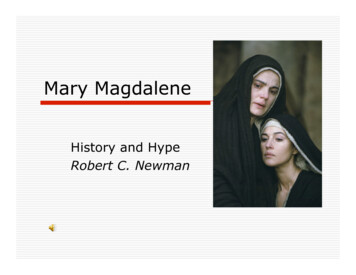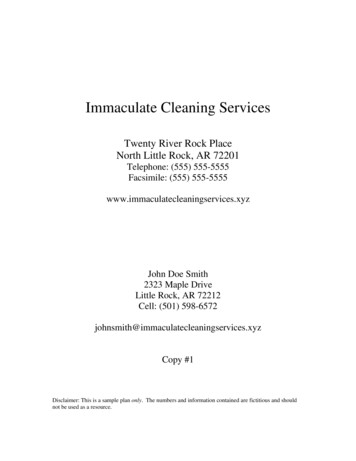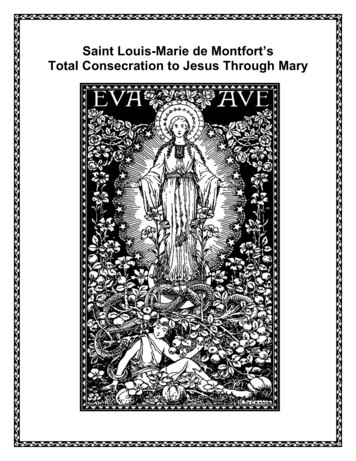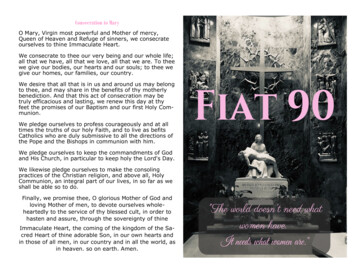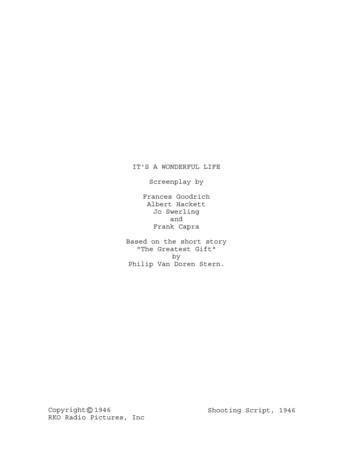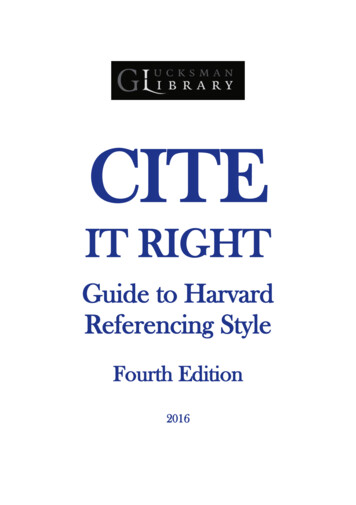
Transcription
CITEIT RIGHTGuide to HarvardReferencing StyleFourth Edition20161
Contents11.11.21.31.4REFERENCING: AN INTRODUCTIONESSENTIAL ELEMENTS OF REFERENCINGPLAGIARISMHARVARD (NAME-DATE) REFERENCING STYLEREFERENCING STYLES BY DISCIPLINE OR SUBJECT1122222.12.22.3HOW TO CITERULES FOR IN-TEXT CITINGCITING AUTHORS IN-TEXTW HEN AND HOW TO QUOTE445733.13.2REFERENCE LIST & BIBLIOGRAPHYRULES FOR REFERENCING:REFERENCING ELECTRONIC 4.2.124.2.134.2.14A-Z OF SAMPLE REFERENCESARTICLESJournal ArticleMagazine – PrintMagazine – ElectronicNewspaper – PrintNewspaper – ElectronicBOOKSSacred BooksBook with One AuthorBook with More than One AuthorBook – Chapter or ContributionBook – CompiledBook – EditedE-book: PDF Version of a Printed BookE-book: Available Online OnlyE-book: Chapter or Contribution (Online Only)E-book: Accessed via an E-readerAudiobookBook ReviewBook with No Title – Working TitleBook with No Author e.g. Reference Works121212131414141515151616171718181919202021212
Email or MemoPersonal InterviewLetter – including Historical ArchivesSMS Text MessageInstant Messaging (IM)COURSE MATERIALCourse Material – PrintCourse Material – ElectronicLecture NotesPublic FolderDATAPublished Dataset – PrintPublished Dataset – ElectronicUnpublished DataELECTRONIC COMMUNICATIONBlog (Weblog)Social Media & Networking Sites (including Facebook)TwitterDiscussion Board / ForumMailing ListWeb Document with an AuthorWeb Document with No Author and No DateWebpage of an Organisation or CompanyWikiIMAGESImage – Published in PrintImage – ElectronicMap – PrintMap – ElectronicArtwork – PhysicalArtwork – ElectronicLAW AND OFFICIAL PUBLICATIONSActJudgementEU DirectiveStatutory InstrumentOfficial Guidance NoteMEDIAPress 28282929303030313132323333333434353535
4.14.14.154.15.1Radio / Television – Interview or ContributionRadio / Television – ProgrammeRadio / Television – AdvertisementSpeech Delivered LiveSpeech Accessed after the EventFilm on Disk / Storage Device / StreamingMicrofilm / Microfiche / CD ROMPodcastOnline VideoMUSICAL W ORKSRecordings – Commercial AudioSheet MusicPAPERSCase StudyConference Paper – PublishedConference Paper – UnpublishedConference PosterPre-PrintWorking PaperSlideshare PresentationREPORTSPublished ReportUnpublished ReportAnnual ReportTECHNICAL / COMMERCIAL / anslated 444545454646464655.15.25.35.45.5BIBLIOGRAPHIC SOFTWAREENDNOTE DESKTOPENDNOTE ONLINEBIBTEXMENDELEYZOTERO4747474747484
1Referencing: An IntroductionReferencing acknowledges the books, articles, websites, and anyother material used in the writing of a paper, essay or thesis.1.1 Essential Elements of Referencing Citing: referring to sources you quote within your document.This brief citation refers the reader to the exact place in yourreference list or bibliography where you will provide theextended details of the source. Reference list: the detailed list of sources that have beencited within the text. Every reference must have enoughinformation for the reader to find the source again. Bibliography: a list of all references consulted in preparingthe document, whether cited or not.This is an example of in-text citing (citations are in bold fordemonstration only):The early 21st century has seen the development of a globalepidemic of obesity, as emphasised by a growing body of articles,popular books, and most recently the movie Supersize Me(Spurlock 2004). To prevent obesity, habits need to be changedand dietary education as part of the school curriculum is key(MacDonald 1997, p.78). It is clear that to decrease obesity levelsin populations, significant sociological changes will need to takeplace.This is how the entries would look in your reference list:Macdonald, G. (1997) ‘Innovation diffusion and health education inschools’, in Sidell, M., Jones, L., Katz, J. and Peberdy, A.,eds., Debates and dilemmas in promoting health, London:Open University, 55-83.Spurlock, M. (2004) Supersize me: a film of epic proportions [film],Beverly Hills: Roadside Attractions.1
1.2 PlagiarismPassing off another scholar’s work as your own is plagiarism and isconsidered a major disciplinary offence. Read more about plagiarismin Chapter 6 and Appendix 3 of the UL Student nitin.com is used at the University of Limerick to check forinstances of plagiarism in students’ work. Check with your departmentwith any questions about the use of Turnitin.1.3 Harvard (Name-Date) Referencing StyleMany departments in the University of Limerick recommend a stylebased on the Harvard (Name-Date) referencing style. This guide givesyou a version of Harvard based on ISO 690:2010 and BS 5605:1990approved by UL, hereafter called Harvard UL. However, you shouldcheck which style or variation your department recommends (seesection 1.4). Whatever referencing style you choose to follow youmust ensure: Consistent application of the rules of whatever variation youare following Acknowledgement of all sources Sufficient bibliographic detail to enable your reader to locatethe item to which you are referring.1.4 Referencing Styles by Discipline or SubjectIn addition to the Harvard UL style, there are several other styles usedin the University of Limerick as other styles are more appropriate tospecific disciplines or subjects such as: History – The Irish Historical Society (IHS). See the Rules forContributors on http://irishhistoricalstudies.ie. Law – OSCOLA Ireland based on the OSCOLA (OxfordStandard for Citation of Legal Authorities) standard. Seehttp://www.legalcitation.ie for more information.2
Culture and communication – MLA Style (Modern LanguageAssociation) Psychology – APA Style (American PsychologicalAssociation)There are thousands of other referencing styles including: ASME Citation Style (American Society of MechanicalEngineers) Chicago Manual of Style / Turabian Citation Style IEEE (Institute of Electrical & Electronic Engineers) Vancouver Citation StyleIf submitting a paper to a publisher, you should check with them to seeif there is a particular style that they would like you to use.The Glucksman Library’s Referencing & EndNote LibGuide providesmore information on the different referencing styles and EndNotebibliographic management software athttp://libguides.ul.ie/referencing-endnote. This guide is also availableelectronically in HTML and PDF at http://libguides.ul.ie/citeitright.You can direct referencing queries or comments to the InformationDesk, your Faculty Librarian or via Ask Us – Tell Us on the librarywebsite: www.ul.ie/library.3
2How to CiteYou must cite the sources you use in your work within the text of yourpaper. This brief citation refers the reader to the exact place in yourreference list or bibliography where you will provide the extendeddetails of the source.2.1 Rules for In-Text CitingAuthor(s) name: Use surname only.Use both authors’ surnames linked by ‘and’ for 2 authors. Use firstauthor’s surname and et al. for 3 or more authors. If citing multiplesources at same time, list in chronological order and alphabeticallythereafter for sources sharing the same year. (See examples insection 2.2).Year: Give full four digits for year.Pages/Point: Abbreviate to p. for single page and pp. for page range.Give full numbers for page range.You will see all of the following variations when page numbers arecited. All are valid. Quote from a single page: (Critser 2003, p.31) Quote from multiple pages: (Critser 2003, pp.31-32) Quote generally: (Critser 2003) Structure your sentence to include the in-text citation: Critsersaid in 2003 (p.31) No page numbers: Count your paragraphs and refer ifpossible to the paragraph number and/or section heading:(Critser 2003, para. 11) or (Critser 2003, Introduction, para. 2)You should cite album tracks or times, video frames or times, or otherspecific points on a larger piece of work in the same way: (Ryan 2012,track 23). Time should be in the 24-hour clock in the format hh:mm:ss.Use the time to an appropriate granularity i.e. the seconds value maynot be needed or available: (McCarthy 2011, 01:22).4
In some disciplines page numbers are required, for example, only forlong works and not for articles. The Harvard UL style recommendsgiving page numbers if you are quoting directly. However, if you areparaphrasing it is not essential to give page numbers.2.2 Citing Authors In-TextAuthor2.2.1One author2.2.2Two authors2.2.3Three or moreauthors2.2.4No authorCiting withintextReference List(Buckroyd1996)Buckroyd, J. (1996) Eating your heart out:understanding and overcoming eatingdisorders, 2nd ed., London:Vermilion.(Beardsworthand Keil 1997)Beardsworth, I. and Keil, T. (1997)Sociology on the menu: an invitationto the study of food and society,London: Routledge.(Cohen et al.2000)Cohen, L., Manion, L. and Morrison, K.(2000) Research methods ineducation, London: s medical dictionary (1992), 37thed., London: A & C Black.Cite the title as the author2.2.5Author with atitle Dr., Professor,Sir, Lord.(Archer 1991)Archer, J. (1991) As the crow flies,London: Hodder and Stoughton.Do not include author titles in a reference5
Author2.2.6First of twoworks by anauthor in oneyear2.2.7Second of twoworks by anauthor in oneyear2.2.8Contribution(article orchapter) in anedited bookCiting withintextReference List(Hawking1984a)Hawking, S.W. (1984a) 'The cosmologicalconstant is probably zero', PhysicsLetters B, 134(6), 403-404, 370-4.(Hawking1984b)Hawking, S.W. (1984b) 'The quantumstate of the universe', NuclearPhysics B, 239(1), 13(84)90093-2.(MacDonald1997)Macdonald, G. (1997) ‘Innovationdiffusion and health education inschools’, in Sidell, M., Jones, L., Katz,J. and Peberdy, A., eds., Debatesand dilemmas in promoting health,London: Open University, 55-83.Cite the author of the article or chapter in the text and give full details on thearticle, the book and its editors in your reference list2.2.9Source quotedin anothersourceSmith 1990(cited inBuckroyd1996) or(Smith, citedin Buckroyd1996)Buckroyd, J. (1996) Eating your heart out:understanding and overcoming eatingdisorders, 2nd ed., London:Vermilion.You should always try to find the primary source however, if you read anarticle which refers to a different article, only cite the article you have read2.2.10Organisationalor institutionalauthor(HealthPromotionUnit 1997)Health Promotion Unit (1997) A nationalsurvey of involvement in sport andphysical activity, Dublin: HealthPromotion Unit.6
Author2.2.11Subordinate ordivision of aparent body2.2.12Author is agovernmentdepartmentCiting withintextReference List(OECD,Manpowerand SocialAffairsCommittee1986)OECD, Manpower and Social AffairsCommittee (1986) Measures to assistworkers displaced by structuralchange, Paris: OECD.(Ireland,Department ofHealth andChildren2005)Ireland, Department of Health andChildren (2005) Statement of strategy2005-2007, Dublin: Department ofHealth and Children, sed 15 Jul 2016].Give the parent body first where the author is an organisation which is asubordinate or division of a parent body2.2.13Referring totwo differentsources at thesame time(HealthPromotionUnit 1997;Critser 2003)Critser, G. (2003) Fat land, London: AllanLane.Health Promotion Unit (1997) A nationalsurvey of involvement in sport andphysical activity, Dublin: HealthPromotion Unit.List sources in chronological order first and alphabetically thereafter forcitations sharing the same year2.3 When and How to QuoteYou must quote or paraphrase correctly to avoid plagiarism. To quote is to directly use another’s words and to acknowledgethe source:The rise in obesity grew from a “boundary-free culture ofAmerican food consumption” (Critser 2003, p.31), 7
To paraphrase is to express the author’s work in your own wordsand to acknowledge the source:Increasing obesity levels in the United States grew from afood consumption culture that was boundary-free (Critser2003), To summarise is to describe broadly the findings of a studywithout directly quoting from it:In a popular study, Critser (2003) argues that our culture isnow without boundaries To plagiarise is to present another’s work as your own and notacknowledge the source:In the United States the rise in obesity grew from a boundaryfree culture of American food consumption. Common knowledge refers to a statement so well known thatthere is no need to reference it:As Albert Einstein said, “Science is 1% inspiration and 99%perspiration” Rule for short quotations:Put short quotations (around twenty words or less) in invertedcommas within the text:Society has developed a “boundary-free culture” (Critser2003, p.31), which has affected our food consumption.Rule for long quotations:Long quotations should be indented in a separate paragraph, in asmaller font. Cite the author and date in the same font and in bracketsat the right margin of the page, under the quotation:Nowhere did this new boundary-free culture of American foodconsumption thrive better than in the traditional American family,which by the ’80s was undergoing rapid change.(Critser 2003, p.31)This is how the entry for Critser would look in your reference list:Critser, G. (2003) Fat land, London: Allan Lane.8
3Reference List & BibliographyThe terms ‘reference list’ and ‘bibliography’ are sometimes usedinterchangeably. Be aware that there are differences between the two.The reference list is a detailed list of all references cited within the textof a paper.A bibliography is also a detailed list of references and backgroundreading, but these references may or may not have been cited withinthe text.Every reference must have enough information for the reader to findthe source again. The most common mistake in the reference list isleaving out an essential element, e.g. the year or the publisher. Thesecond most common mistake in the reference list is inconsistency inpunctuation and capitalisation.3.1 Rules for Referencing References should be in alphabetical order by authorsurname References must not be numbered The layout, punctuation and capitalisation of all referencesmust be consistent: Capitalise book, article and chapter titles in sentencestyle Capitalise all personal names and places Capitalise journal titles Put the main source title in italicsFor non-traditional material, references should include detailsof format and/or medium after the main source title: [DVD],[speech], [microfiche].9
Use hanging indents to visually differentiate between references. In ahanging indent all but the first line of each reference is indented fromthe left margin.Beardsworth, I. and Keil, T. (1997) Sociology on the menu: aninvitation to the study of food and society, London: Routledge.3.2 Referencing Electronic Sources References should include a stable web address preferably apersistent identifier such as a DOI (Digital Object Identifier) ora handle (e.g. the URL from an item in an institutionalrepository: http://hdl.handle.net/10344/3392). References should have an “accessed” date in the format 02Jan 2016 unless the reference includes a persistent identifiersuch as a DOI or handle. For example, an “accessed” dateshould be omitted for references to journal articles if the DOIis included. References that are likely to be altered or destroyed shouldinclude a time in the format hh:mm:ss. Note that unlike the previous three editions of Cite It Right,there is no need to include “[online]” for references thatinclude a web address.As stated above, Harvard UL recommends the use of permanent,stable identifiers such as DOIs. This is because URLs can change or“break” but a DOI will always redirect to the original source. Not allelectronic material has a DOI so you should use the URL that bestleads back to your source and not to a results page or other dynamicwebpage. To check a link, open the URL in a new browser windowand see if it directs to the correct page.DOIs are usually given as alphanumerical strings such as10.1109/ICGSE.2006.261229. To find the corresponding source youcan either prefix the string with http://dx.doi.org/ or put the string intoan Internet search engine. When using a DOI in a reference you canuse:10
available: able: doi: 10.1109/ICGSE.2006.26122911
4A-Z of Sample ReferencesThe following examples follow the agreed Harvard UL style. Theseexamples are intended as a guide and should be adapted for yourown reference list or bibliography. If the item type that you want toreference does not appear in this chapter, you should use the rulesfrom chapter 3, and examples of similar items, to create a reference ina manner consistent with Harvard UL.4.1 Articles4.1.1 Journal ArticleAuthor(s) name, initial(s). (year of publication) ‘Title ofarticle’, Title of Journal, Volume(Issue number), [or]date/month of publication [in the absence of volume andissue], page number(s)[or ID number if e-only journal],available: doi/web address [if e-journal] [accessed date ife-journal but no DOI].Lynch, D., Henihan, A.M., Kwapinski, W., Zhang, L. andLeahy, J.J. (2013) 'Ash agglomeration and depositionduring combustion of poultry litter in a bubbling fluidizedbed combustor', Energy & Fuels, 27(8), 4684-4694,available: http://dx.doi.org/10.1021/ef400744u. (Lynch et al. 2013) McCaffrey, C. (2013) 'LibQUAL in Ireland: performanceassessment and service improvement in Irish universitylibraries', The Journal of Academic Librarianship, 39(4),347-350, available: doi: 10.1016/j.acalib.2012.11.036. (McCaffrey 2013) 12
Hudson, J., Tierney, T.D. and Casey, C. (2002) 'Breedingwaders on cutaway bog in County Offaly, 2002', IrishBirds, 7, 61-64. (Hudson et al. 2002) Hu, G., Feeley, K.J. and Yu, M. (2016) 'Habitat fragmentationdrives plant community assembly processes across lifestages', PloS One, 11(7), e0159572, 159572. (Hu et al. 2016) Lassi, M. and Sonnenwald, D. (2010) 'Identifying factors thatmay impact the adoption and use of a social sciencecollaboratory: a synthesis of previous research',Information Research, 15(3), colis710, olis710.html[accessed 05 Aug 2016]. (Lassi and Sonnenwald 2010) References to journal articles must include the web addressunless the article is from a print only journal. It isrecommended that a DOI (Digital Object Identifier) is used ifavailable, as it is a permanent identifier provided by publishersto allow direct, long term access to the article. Where there isno DOI, the stable URL should be used.4.1.2 Magazine – PrintAuthor(s) name, initial(s). (year of publication) ‘Title ofarticle’, Title of Magazine, Volume(Issue number), [or]date/month of publication [in the absence of volumeand issue], page number(s).Doody, O. and Danaher, T. (2012) ‘Developing support forintellectual disability practice – Nursing Network inIntellectual Disabilities Ireland (NNIDI)’, FrontlineMagazine, 88, 36-37. (Doody and Danaher 2012) 13
4.1.3 Magazine – ElectronicAuthor(s) name, initial(s). (year of publication) ‘Titleof article’, Title of Magazine, available: web address[accessed date].Koeppel, D. (2007) China’s iClone, Popular Science, available:http://www.popsci.com/iclone [accessed 04 Apr 2016]. (Koeppel 2007) .4.1.4 Newspaper – PrintAuthor(s) name, initial(s). (year of publication) ‘Title ofarticle’, Title of Newspaper, Supplement title [if relevant],date, page number(s).Sheridan, A. (2013) ‘UL opens its huge picture archive’,Limerick Leader, 27 Jul, 11. (Sheridan 2013) .4.1.5 Newspaper – ElectronicAuthor(s) name, initial(s). (year of publication) ‘Title ofarticle’, Title of Newspaper, date, available: librarydatabase or web address [accessed date].Kinsella, S. (2013) ‘Why the head must rule the heart on statepolicy’, Irish Independent, 22 Oct, rt-on-statepolicy-29678738.html [accessed 31 Mar 2016]. (Kinsella 2013) .14
4.2 Books4.2.1 Sacred BooksReferences to Sacred Books of religious traditions are notusually included in the bibliography. References to theseBooks should include book (abbreviated), chapter and verse –never a page number. Traditionally a colon is used betweenchapter and verse.Examples from the Bible: (Heb. 13:8) (2 Kings 11:12) Example from The Torah: (Leviticus 19:18) Example from The Qur’an (or Koran): (Qur’an 2:214) 4.2.2 Book with One AuthorAuthor name, initial(s). (year of publication) Title of bookor report: subtitle [if any], ed. [if not 1st edition], Place ofPublication: Publisher.Devereux, E.A. (2013) Understanding the media, 3rd ed. LosAngeles: SAGE. (Devereux 2013) .Do not state in the reference that a book is a first edition. Anyother edition (2nd, 3rd, 4th, etc.) must be specified as above.Edition information is usually given on the reverse of the titlepage of a book.A reprint implies that the book has not been edited but simplythat new copies have been produced. Do not include reprint15
information in a book reference. The year of publication is theyear of the edition, not the year of the reprint.4.2.3 Book with More than One AuthorAuthors name, initials. (year of publication) Title of book:subtitle [if any], ed. [if not 1st edition], Place ofPublication: Publisher.Wallace, J., McMahon, G., Gunnigle, P. and O'Sullivan, M.(2013) Industrial relations in Ireland, 4th ed., Dublin: Gill& Macmillan. (Wallace et al. 2013) Where there are three or more authors, use et al. in thecitation, but list all authors in the reading list/bibliography.Check with your department for departmental preferences relisting authors in both in-text citations and readinglists/bibliographies. The convention is to italicise et al.4.2.4 Book – Chapter or ContributionAuthor(s) name, initial(s). (year of publication) ‘Title ofchapter / contribution’ in Editor(s) or Compiler(s) name,initial(s). of book containing the contribution, ed(s). [orcomp(s).], Title of book: subtitle [if any], ed. [if not first],Place of Publication: Publisher, page number(s).O'Connor, P. (2010) 'Gender and organisational culture atsenior management level: limits and possibilities forchange' in Harford, J. and Rush. C., eds., Have womenmade a difference? Women in Irish universities 18502010, Oxford: Peter Lang, 139-162. (O’Connor 2010) .Cite the author(s) of the chapter in the text of your paper, notthe editor(s) of the book.16
4.2.5 Book – CompiledCompiler(s) name, initial(s) comp(s). (year ofpublication) Title of book: subtitle [if any], ed. [ifnot 1st edition], Place of Publication: Publisher.O'Dwyer, M. comp. (2003) Entrepreneurship, Harlow: PearsonCustom Publishing. (O’Dwyer 2003) Some publications are edited or compiled rather than writtenby the person whose name appears on the title page. Thefunction of the editor(s) or compiler(s) should be indicated afterhis/her name, e.g. ed., comp., in the reference list/bibliography.In the text, refer to the author(s) of the chapter or book section.4.2.6 Book – EditedEditor(s) name, initial(s). ed(s). (year of publication) Titleof book: subtitle [if any], ed. [if not 1st edition], Place ofPublication: Publisher.Chambers, A., Conacher, J.E. and Littlemore, J.M. eds. (2004)ICT & language learning: integrating pedagogy andpractice, Birmingham: University of Birmingham Press. (Chambers et al. 2004) Some publications are edited or compiled rather than writtenby the person whose name appears on the title page. Thefunction of the editor(s) or compiler(s) should be indicated afterhis/her name, e.g. ed., comp., in the reference list/bibliography.In the text, refer to the author(s) of the chapter or book section.17
4.2.7 E-book: PDF Version of a Printed BookWhere an e-book looks like a printed book, you canreference it as a normal book (see above).Some e-books do not have pagination, are only availableonline or only on e-book readers and these are referencedto reflect these differences.4.2.8 E-book: Available Online OnlyAuthor(s) name, initial(s). (year of publication) Title ofbook: subtitle [if any], ed. [if not 1st edition], Name of ebook supplier/publisher, available: web address[accessed date if no DOI or handle].Gentry, T.G. (2014) The nests and eggs of birds of the UnitedStates, Free-Ebooks.net, available: -of-Birds-of-theUnited-States [accessed 05 Aug 2016]. (Gentry 2014) de Grosbois, T. (2015) Mass influence: the habits of the highlyinfluential, Wildfire Workshops, available:http://www.massinfluencethebook.com/ [accessed 05Aug 2016]. (de Grosbois 2015) 18
4.2.9 E-book: Chapter or Contribution (Online Only)Author(s) name, initial(s). (year of publication) ‘Title ofchapter / contribution’ in Editor(s) or Compiler(s)name, initial(s). of book containing the contribution,ed(s). [or comp(s).], Title of book: subtitle [if any], ed.[if not 1st edition], Name of e-book supplier/publisher,page number(s) [or other location information ifavailable] available: web address [accessed date if noDOI or handle].Anderson, E. (2014) ‘Dewey's moral philosophy’ inZalta, E.N., ed., The Stanford encyclopedia ofphilosophy, Stanford University, 14/entries/dewey-moral/ [accessed 05 Aug 2016]. (Anderson 2014) .4.2.10 E-book: Accessed via an E-readerIf you accessed an e-book via an e-book reader, you mustindicate this in the full reference. As there will be no pagenumbers, you should use chapter and paragraph numbersin their place in the in-text citation as appropriate.Author(s) name, initial(s). (year of publication) Title ofbook: subtitle [if any] [e-book reader name], ed. [if not1st edition], Place of Publication: Publisher.McCourt, F. (2005) Teacher man: a memoir [Kindle], London:Scribner. (McCourt 2005, ch.1, para.3) 19
4.2.11 AudiobookAuthor(s) name, initial(s). (year of publication ofaudiobook) Title of audiobook [audiobook], Narrator(s)name, initial(s). [if necessary], Name of Audiobooksupplier, available: web address [accessed date].Joyce, J. (2005) Dubliners [audiobook], McCourt, M., SimplyAudiobooks, ks/Dubliners/10277/ [accessed 05 Aug 2016]. (Joyce 2005) Cite the author of the book within the text of your paper,not the narrator.4.2.12 Book ReviewReviewer(s) name, initial(s). (year of publication of review)Title of book being reviewed by Author(s) name, initial(s).of book, reviewed in Title of Publication containing thereview, volume(issue), page(s) [where available],available: web address [if online] [accessed date if no DOIor handle].Bracken, F. (2014) Web metrics for library and informationprofessionals by Stuart, D., reviewed in An Leabharlann:The Irish Library, 23(2), 34, es/private%3A//leabharlann/An%20Leabharlann 23 2n 0.pdf [accessed05 Aug 2016]. (Bracken 2014) Cite the author of the review within the text of your paper, notthe author of the original book.20
4.2.13 Book with No Title – Working TitleAuthor(s) name, initial(s). (year of publication,forthcoming) Title of book or report (Working title), ed.[if not 1st edition], Place of Publication: Publisher.Radin, P. (2016, forthcoming) Primitive man as philosopher(Working Title), New York: New York Review of Books. (Radin 2016, forthcoming) A book may be referred to by its working title before it ispublished.4.2.14 Book with No Author e.g. Reference WorksTitle of work (year of publication) ed. [if not firstedition], Place of Publication: Publisher.Guinness World Records 2016 Blockbusters (2015), London:Guinness World Records. (Guinness World Records 2016 Blockbusters 2015)4.3 Correspondence4.3.1 Email or MemoAs a personal email or electronic memo is not a public sourceof information it is not considered recoverable data, thereforeyou should not list it in your bibliography. However, you canrefer to its contents in the body of your text by citing thedetails. in an email to the author (Aug 2014) Gorman clarified thepoint 21
4.3.2 Personal InterviewAs a personal interview is not a public source, it is notconsidered to be recoverable data, therefore you should notlist it in your bibliography. However, you can refer to theinterview in the body of your text by citing the details. In an interview (Apr 2005) the findings of the reportwere discussed and Breen agreed If the interview is transcribed in an Appendix, refer the readerto that appendix.4.3.3 Letter – including Historical ArchivesAuthor(s) name, initial(s). (year) ‘Subject matter’, letterto Recipient’s Name, date, held in Collection,Institution, City, Accession/Collection/Item Number [ifavailable].Lloyd George, D. (1920) ‘Invitation to attend Parliament on 10Feb 1920’, letter to Eamon DeValera, 2 Feb, held inNorton Collection, Glucksman Library, University ofLimerick, Limerick. (Lloyd George 1920) 4.3.4 SMS Text MessageA personal SMS text message is not a public source ofinformation and is not considered recoverable data, thereforeyou should not list it in your bibliography. However, you canrefer to its contents in the body of your text by citing th
2 contents 1 referencing: an introduction 1 1.1 essential elements of referencing 1 1.2 plagiarism 2 1.3 harvard (name-date) referencing style 2 1.4 referencing styles by discipline or subject 2 2 how to cite 4 2.1 rules for in-text citing 4 2.2 citing authors in-text 5 2.3 when and how to quote 7 3 reference list & bibliography 9 3.1 rules for referencing: 9
